Strategic Air Command

Brief Synopsis
Cast & Crew
Anthony Mann
James Stewart
June Allyson
Frank Lovejoy
Barry Sullivan
Alex Nicol
Film Details
Technical Specs

Synopsis
At the St. Louis Cardinals' winter baseball camp in Florida, third baseman Robert "Dutch" Holland reunites with his old Air Force buddy, Gen. Rusty Castle, and invites him to his wife Sally's housewarming party that night. During the evening, Rusty informs Dutch, a reservist, that his colleague, Gen. Ennis C. Hawkes, has called Dutch back to duty for the Strategic Air Command, or SAC. Dutch, who was a bomber pilot during World War II, reacts to the announcement with anger, as he enjoys playing baseball and is newly married. Although sympathetic, Rusty explains to Dutch that the Air Force needs seasoned pilots to fly the SAC planes, which carry atomic bombs. After Dutch tells Tom Doyle, his coach, about his situation, he prepares to break the news to Sally. To his surprise, Sally already knows about his twenty-one month assignment and assures him that she can cope with military life. Later, when Dutch reports for duty at Carswell Air Force Base in Fort Worth, Texas, he witnesses a staged enemy invasion, a test overseen by Gen. Hawkes. Dutch then goes for his physical and Sally calls him repeatedly, anxious to get settled in their new quarters. Dutch, an operations officer, continues his general training on a huge B-36 aircraft, reuniting with his World War II flight engineer, Sgt. Bible. While flying round trip to Alaska in one day, Dutch is introduced to the plane's crew, including co-pilot Lt. Col. Rocky Samford and navigator Ike Knowland, who complains bitterly about being called up during peacetime. Later, Dutch convinces Hawkes to allow him to leave his desk job to learn more about the Air Force's new technology. After Dutch discovers that Sally is pregnant, he is assigned his own plane and asks Ike to join his crew. Two weeks before Sally is due, Dutch is sent on a four-day mission to Greenland to test his plane's performance in extremely cold weather. Sally is unhappy and worried about the mission, but Dutch insists on going. As the plane nears its destination, a fuel leak develops and a fire erupts on the wing. On Dutch's orders, everyone bails out except for Dutch and Ike, who chooses to remain on board to alert air control of their position. Dutch crash-lands the plane in the snow, injuring his shoulder in the process. Ike also is injured, but after a few days in sub-zero temperatures, the men are found by a rescue team. Upon arriving at the nearest base, Dutch receives word that Sally has given birth to a girl and, although he admits to having wanted a boy, celebrates with his comrades. Hawkes then questions Dutch about the crash and, impressed by his clear-headed handling of the situation, shows him the Air Force's newest plane, the B-47. Dutch is thrilled by the powerful plane and agrees to fly it, but Sally continues to worry about his safety. After Dutch and Sally are transferred to MacDill Air Force Base in Tampa, Florida, Dutch and Ike attend a briefing by Hawkes, who reminds his men that planes like the B-47 are necessary to maintain world peace. Dutch flies some test missions in the B-47, and when he admits to Sally that his shoulder is still bothering him, she beseeches him to see a doctor, as Hawkes had ordered, but he refuses. The B-47's biggest test comes when Hawkes arranges for a squadron to fly non-stop to Japan, using mid-air fueling planes. At the same time, Sally learns that the Cardinals' third baseman has been injured and that Tom wants Dutch, whose twenty-one months is up, to return to the team. To Sally's dismay, Dutch turns down the offer and declares that he has already agreed to stay in the Air Force. Sally denounces Dutch for making the decision without consulting with her and tells him he has become a stranger to her. After a depressed Dutch takes off for Japan, Sally rushes to the base and yells at Hawkes for manipulating Dutch with promotions and warns him that Dutch is headed for a "crack-up." Though the mid-air fueling is successful, the long flight is grueling for the pilots, and Dutch's shoulder grows stiff. Near Japan, Dutch has to increase his plane's altitude to compensate for a strong jet stream, using up precious fuel. A dense fog then rolls in, and Dutch, groggy and in pain, is forced to make a difficult landing in Okinawa. As he does, he finds he cannot move his shoulder and asks his co-pilot to work his throttle for him. Dutch lands safely, but is reprimanded by Hawkes for hiding his shoulder problem. Hawkes then sadly informs Dutch that because of his ailment, he can no longer fly planes and offers him a desk job. After turning Hawkes down, Dutch reunites with an apologetic Sally.

Director

Anthony Mann
Cast
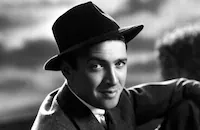
James Stewart
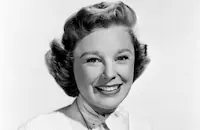
June Allyson

Frank Lovejoy

Barry Sullivan

Alex Nicol
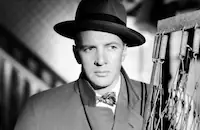
Bruce Bennett

Jay C. Flippen

James Millican
James Bell

Rosemary Decamp
Richard Shannon
John Mckee

Henry Morgan
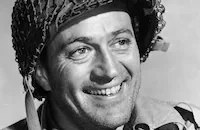
Don Haggerty
Glenn Denning
Anthony Warde
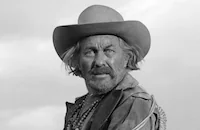
Strother Martin
Helen Brown
William Hudson
David Vaile
Vernon Rich

Harlan Warde
Robert House Peters Jr.
Henry Richard Lupino
William August Pullen
Stephen E. Wyman

Gregg Barton
Len Hendry
Mike Mahoney
Hubie Kerns
Max Power
Dalt Hutchinson
Crew
Samuel J. Briskin
Sam Comer
John Coonan
Valentine Davies
Farciot Edouart
Lyle Figland
John P. Fulton
Gene Garvin
Edith Head
Earl Hedrick
Dick Jensen
Col. O. F. Lassiter U.s.a.f.
Beirne Lay Jr.
Beirne Lay Jr.
Harry Lindgren
Paul Mantz
Bernard Mceveety [jr.]
Frank Mckelvy
Curtis Mick
James Miller
Charles Morton
Richard Mueller
Hal Pereira
James Rosenberger
Al Ross
Major Tommy Thompson Jr.
Thomas Tutwiler
Eda Warren
Ned Washington
Wally Westmore
Victor Young
Victor Young

Film Details
Technical Specs

Award Nominations
Best Writing, Screenplay
Articles
Strategic Air Command
He was an actor. But he was also the real thing. No Hollywood figure served in WWII with more distinction. Many times decorated, he rose from second lieutenant to brigadier general, flying dozens of combat missions over Germany, subjecting himself to unnecessary risks, like flying over targets a second time to make sure the mission was accomplished, and leaving safety to go to the aid of airborne comrades threatened by the Luftwaffe. And he was technical-minded as well as courageous. Although he grew up in a time when it was virtually impossible for a young man to remain immune from the novelty and romance of flight, Stewart was anything but a romantic in his approach to it. He may have gone from Princeton to the Broadway stage in 1932, but he also graduated with a degree in architecture, having switched from engineering. For his graduate thesis he designed an airport, including terminal and hangars.
His love of flying was as real as his conservative brand of patriotism. He's the only one in the film who seems in his element, not seeming to realize that the Oscar®-nominated script's skeletal crudeness doesn't give him much element to be in. It's tailored to the Stewart persona, which was always more complicated than his drawling string-bean image. His surface hesitations and taciturnity never hid a spine of steel, and never tried to. Stewart was a principled man who isn't given much more to do here than be principled. There's an attempt to inject drama and emotion, but sunny June Allyson who previously played his wife in The Stratton Story (1949, echoing the baseball angle) and The Glenn Miller Story (1953) -- never gets off the ground, dramatically speaking. He seems married to the SAC, not her, acting all fumbly when she tells him she's expecting, but never thinking to consult her when he decides unilaterally to re-up.
Stewart pretends to grumble at the idea of training to fly the planes that have replaced the B-17s and B-24s he flew during WWII. She barges onto the base repeatedly, interrupting his training with phone calls, and otherwise is depicted as a whiny nag, who finally catches up with his patriotic vision at the end. Those pesky but of course lovable -- '50s women in page boy haircuts and full-flare skirts! Stewart's reactivated pilot saves his real enthusiasm as much as his laconic and vaguely crabby mannerisms allow for the big Convair B-36 bombers and the sleeker, smaller, more streamlined B-47 Stratojets that replaced them. If we didn't catch the phallic symbolism of the cigars chomped on by Frank Lovejoy's LeMay surrogate in the film, it's unavoidable when one of the ground crew refers to the huge winged silver cylinder as "the big cigar." The film's emotional peak comes when Lovejoy's general takes Stewart into a hangar for a sneak peek at the B-47 still under wraps.
When SAC success is defined as nothing happening, and there are no enemy aircraft to engage in dogfights or combat, Strategic Air Command labors to create the impression of eventfulness. When it comes, it's based on things going wrong Stewart crash-landing in Greenland's frozen wastes when a leaking fuel line occurs during a cold-weather test, Stewart crash-landing in fog on Okinawa with one arm out of commission. When the violins are cued to a soaring crescendo, it's to accompany images of mid-air refueling! And yet those huge metal beasts, consigned to oblivion a few years later when ICBMs entered the picture, are magnificent. The images of one after another big bomber churning serenely through piles of clouds, in seeming defiance of their tonnage, are still breathtaking. It's no wonder Stewart kept flying across movie screens as Charles Lindbergh in The Spirit of St. Louis (1957), as the survivalist captain in The Flight of the Phoenix (1965).
Of course, Stewart was filmed at the controls of the planes he unconvincingly groused about having to learn to fly while lighting fires under slacker crew members reluctant to commit to the SAC when postwar prosperity beckoned. Stunt flier Paul Mantz (who did the actual flying here and died when his plane crashed in Buttercup Valley, California, during the filming of The Flight of the Phoenix) deserves star billing alongside Stewart, Allyson, Lovejoy and such other dependables as Barry Sullivan, Jay C. Flippen and Alex Nicol. Of course, he didn't get it. Nor did Thomas Tutwiler, whose spectacular way of bringing visual oomph to essentially static shots by placing his camera at the edge of a wing, or atop the landing gear, allowing audiences to enjoy a gremlin's-eye point of view, remains, if anything, even more arresting now that the planes carry a nostalgia factor instead of nuclear bombs. The '50s were about wideness wide sofas, wide cars, wide screens. And there's still something potent in the sight of these Cold War relics taking to the wide blue yonder.
Producer: Samuel J. Briskin
Director: Anthony Mann
Screenplay: Valentine Davies, Beirne Lay, Jr.
Cinematography: William H. Daniels
Film Editing: Eda Warren
Art Direction: Earl Hedrick, Hal Pereira
Music: Victor Young
Cast: James Stewart (Lt. Col. Robert Holland), June Allyson (Sally Holland), Frank Lovejoy (Gen Ennis Hawkes), Barry Sullivan (Lt. Col. Rocky Samford), Alex Nicol (Ike Knowland), Bruce Bennett (Gen. Espy).
C-112m.
by Jay Carr

Strategic Air Command
Quotes
You got any kids?- Lt. Col.
Yep, two. One on the ramp, one in the hanger!- Sgt. Bible
Trivia
Notes
The working title of this film was Air Command. The film opens with the following written dedication: "America today is watching her skies with grave concern. For in these skies of peace, the nation is building its defense. To the officers and men of the United States Air Force, to The Strategic Air Command, whose cooperation is gratefully acknowledged, and to the young men of America who will one day take their places beside them, this motion picture is dedicated."
Modern sources state that James Stewart, who, like his character "Dutch," was a World War II bomber pilot and was still active in the Air Force Reserve in the 1950s, achieving the rank of brigadier general in 1959, persuaded Paramount to make a picture about SAC, arguing that it would be patriotic and financially sound. Stewart also convinced the studio to assign Anthony Mann as director, according to modern sources. Hollywood Reporter news items add Maj.-Gen. Frank Armstrong, Jr., Byron Poindexter, George Washburn, Jack Downs, Robert Templeton and Lee Miller to the cast, but their appearance in the final film has not been confirmed. Studio publicity materials state that the following St. Louis Cardinals and ex-Cardinals played themselves in the picture: Enos Slaughter, Stan Musial, Red Schoendienst, Peanuts Lowrey and Memo Luna. Their appearance in the final film has not been confirmed, however.
According to studio publicity materials, location filming took place at MacDill Air Force Base in Tampa, FL, and Carswell Air Force Base in Fort Worth, TX, and at Al Lang Field and Plant Stadium in Florida. In its advertising, Paramount claimed that the picture showed "previously secret installations" for the "first time." Strategic Air Command was Paramount's second VistaVision release. According to the Hollywood Reporter review, during a special preview in Omaha, NE, where the film was projected on a 50-by-27 foot curved screen, shots of the B-36 "caught in majestic solitude against the sky...brought awed gasps and wild applause" from the audience. For the New York premiere of the film, held under the auspices of the Air Force Association, Paramount installed a new horizontal VistaVision projector and "the largest motion picture screen in the world," according to a Hollywood Reporter news item.
The New York premiere was attended by many military and government dignitaries, including Senator H. Alexander Smith of New Jersey and Gen. Thomas D. White, Vice Chief of Staff, U.S.A.F. As noted in a Hollywood Reporter news item, the Air Force Association awarded Paramount its annual Citation of Honor for "distinguished public service" in producing the film. The AFA also bestowed a citation on Stewart, for "distinguished public service and outstanding artistic achievement." According to a late April 1955 Hollywood Reporter news item, a five-minute television promotion for the film was broadcast over the CBS regional (West Coast) network, in place of a canceled atomic test. Strategic Air Command was nominated for a Best Writing (Motion Picture Story) Academy Award. Modern sources note that the film was the seventh most profitable release of 1955. Paramount re-issued the picture in late 1961.

Miscellaneous Notes
Released in United States Summer July 1955
Awarded a Special Citation for the Aerial Photography by the 1955 National Board of Review.
VistaVision
Released in United States Summer July 1955













